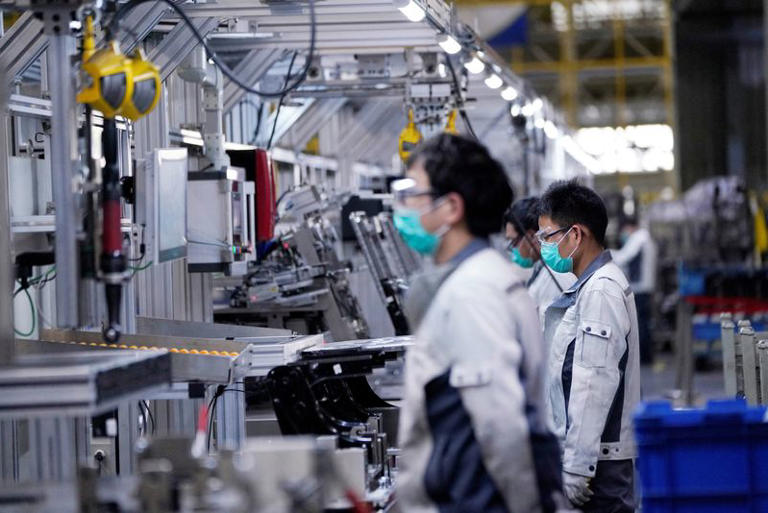Asia’s factory activity showed encouraging signs of growth in June, fueled by solid momentum in the global economy and an optimistic outlook for semiconductor production. This positive development provides some reassurance to policymakers that the region might be resilient enough to withstand the adverse effects of sluggish Chinese demand.
In China, the Caixin/S&P Global manufacturing purchasing managers’ index (PMI) edged up to 51.8 in June from 51.7 in May. This reading, which surpasses the 50.0 threshold separating growth from contraction, marked the fastest expansion rate in over three years and exceeded market expectations of 51.2. Despite facing weak domestic demand and the Chinese government’s unsuccessful attempts to stimulate the struggling property sector, Chinese firms are ramping up production. This trend underscores the resilience of the manufacturing sector even amid broader economic challenges.
South Korea also reported robust factory activity, with growth in June reaching the fastest pace in 26 months. This was driven by a surge in new orders, indicating strong global demand. Joe Hayes, principal economist at S&P Global Market Intelligence, highlighted South Korea’s critical role in global supply chains, particularly for intermediate goods like batteries and semiconductors. He noted that the country’s manufacturing output and orders often serve as leading indicators for broader industrial trends.
Similarly, Vietnam and Taiwan experienced accelerated factory activity in June compared to May. The expansion in these countries reflects the broader regional benefits from the upturn in global industrial activity and trade.
In Japan, factory activity expanded in June, but the growth rate slowed compared to May. The weak yen has led to increased costs for fuel and raw material imports, placing significant pressure on manufacturers. The final au Jibun Bank Japan manufacturing PMI stood at 50.0, the break-even point between growth and contraction, down from 50.4 in May. However, there was a silver lining: an index measuring future output expectations for Japanese firms rose to a six-month high, driven by a more favorable medium-term outlook for the automotive and semiconductor sectors.
The International Monetary Fund (IMF) remains cautiously optimistic about Asia’s economic trajectory, predicting a soft landing for the region. As inflation moderates, central banks are expected to have more room to implement policies that support economic growth. The IMF projects that growth in Asia will decelerate from 5% in 2023 to 4.5% in 2024 and 4.3% in 2025. This outlook reflects the balance of managing inflationary pressures while sustaining growth amid a complex global economic landscape.
